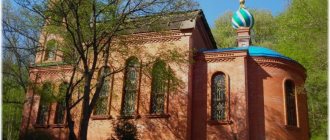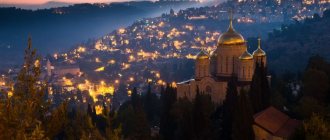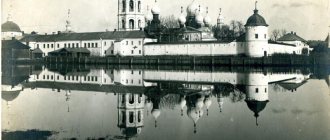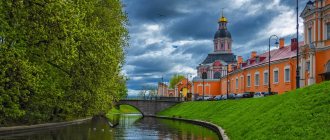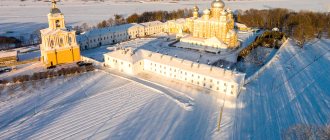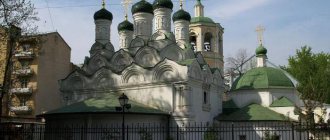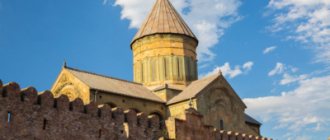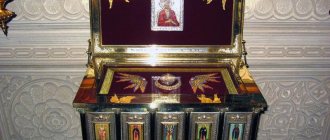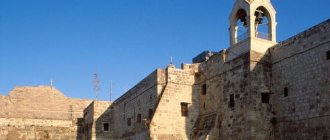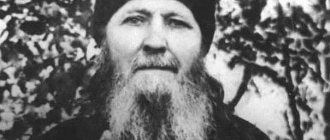In Ancient Abkhazia, the truth of Christ's teachings was preached by the Holy Apostles Andrew the First-Called and Simon the Canaanite.
The Abkhazian land is stained with the blood of the first Christian martyrs. And now the place of the martyrdom of the Holy Apostle Simon the Canaanite and Saint Basilisk is known. In Abkhazia, while in exile, Saint John Chrysostom ended his life (the sarcophagus over his tomb is still preserved).
Everywhere in Abkhazia you can find many ancient Orthodox churches, which testify to the holiness of the place where they stand. For, according to the teachings of the Church, during the consecration of the temple, God assigns a Guardian Angel to the throne, who never leaves him and will testify at the judgment of God about everything that happened in the temple. All this is like seeds that lie hidden for the time being, but favorable times come when they sprout and bear abundant fruit.
In Abkhazia they remember and honor their spiritual roots of the Orthodox faith.
Operating temples
- Sukhumi Cathedral of the Annunciation of the Blessed Virgin Mary. The rector of the cathedral is Priest Vissarion Apliaa (pictured). The clergy of the cathedral: Hieromonk Andrey (Ampar), Hieromonk Sylvestor, Deacon Gregory. Address: Sukhum, st. Abazinskaya, 75. Tel. 6-33-33, (8 442) 73333.
- Church of the Intercession of the Blessed Virgin Mary in Gagra. The rector is Hieromonk Pavel (Kharchenko). Address: Gagra, st. Apsny, 22.
- Temple-chapel of the Pitsunda Saints in the village of Pitsunda. The rector is Hieromonk Dorofei (Dbar). Address: Gagrinsky district, Pitsunda village. Tel. (8 442) 72504.
- Church of the Intercession of the Virgin Mary in Gudauta. The rector is Hieromonk Basilisk (Leiba). Priests of the temple: Hierodeacon Savvaty (Lagutin). Address: Gudauta, st. Kharazia 26. Tel. (8 442) 50192.
- Church of the Assumption of the Virgin Mary in the village. Lykhny. The rector is Archpriest Peter (Samsonov). The serving priest is Hieromonk Ignatius (Kiut). Address: Gudauta district, village. Lykhny. Tel. (8 442) 32511.
- Church of the Intercession of the Virgin Mary in New Athos. The rector is Hieromonk Dorotheos (Dbar). Address: Gudauta district, New Athos. Tel. (8 442) 72504.
- Temple of the Holy Apostle Simon the Canaanite in New Athos. The serving priest is Hieromonk Dorotheos (Dbar). Address: Gudauta district, New Athos. Tel. (8 442) 72504.
- Church of the Transfiguration of the Lord in the village. Yashtukha. The rector is Hieromonk Gregory (Khorkin). Address: Sukhumi district, village. Yashtuh.
- Church of Saints Equal-to-the-Apostles Constantine and Helen in the village. Akapa. The rector is Hieromonk John (Svinukhov). Address: Sukhumi district, village. Akapa. Tel. 6-31-64.
- Temple of the Prophet Elijah in the village of Agudzera. Address: Gulripsha district, Agudzera village. Tel. (8 442) 74470.
- Drandsky Assumption Cathedral. The rector is Hieromonk Dorofey (Dbar). Address: Gulripsha district, Dranda village. Tel. (8 442) 72504.
- Temple of the Archangel Gabriel in the village of Dranda. Address: Gulripsha district, Dranda village.
- Mokva Assumption Cathedral. The clergyman is Priest Igor Artemyev. Address: Ochamchira district, village. Mokva. Tel. (8 442) 72348.
- Church of St. George the Victorious in the village. Yelyr. The rector is Hieromonk Sergius (Jopua). Address: Ochamchira district, village. Yelyr.
- Church of St. George the Victorious in the village. Chuburkhinji. The serving priest is Priest Nikita Adleyba. Address: Gali district, village. Chuburkhinji.
Orthodox Abkhazia
According to the testimony of Greek writers and many other researchers, the seeds of Christianity were planted in Abkhazia in the 1st century after the Nativity of Christ. After 20 years After the Ascension of Christ the Savior and the Descent of the Holy Spirit on the Apostles, the Apostles Andrew the First-Called and his companion Simon the Canaanite appeared on the Caucasian coast of the Black Sea and Abkhazia, penetrating here through Cappadocia and the seaside city of Trebizond. They preached the Gospel teaching here and laid the foundation for the teaching of Christ in 55 AD.
The Apostle Simon the Canaanite remained here in the city of Sevast (present-day Sukhum) to preach Christianity, and the Apostle Andrew the First-Called went further to the land of horsemen, related to the Abkhazian mountaineers (today's Novorossiysk).
The Apostle Simon the Canaanite enlightened the Abkhazians in the vicinity of the city of Sevasta, but during the persecution of Christians by the Iveron king Arkady, he suffered martyrdom on the banks of the Psyrtskha River, near Nikopsia (present-day New Athos) in 55 AD, where he was buried . After his death, the Christian teaching he preached spread and grew, and in the 4th century, at the site of his burial, Christians built a church in his name - Simon the Canaanite.
After the Apostles, Christianity in Abkhazia did not cease to develop, but nevertheless, until the half of the 4th century, it could not firmly establish itself in it: there are, at least, no indications by which one could judge the state of Christianity in Abkhazia from the 1st century to half IV. It is only known that already in the middle of the 4th century. in Abkhazia there were preachers and ministers of the apostolic teaching - presbyters and bishops. Even at the First Ecumenical Council, in 325, the Bishop of Pitsunda, Stratophilus, was present - a circumstance indicating the importance of Christianity in Abkhazia even at that distant time.
Further, Christianity receives broader and more lasting development and approval in Abkhazia: the Byzantine Patriarchs, successors of the apostles, starting from the 4th century, continue the apostolic teaching here; Vast Christian communities led by presbyters and bishops are formed. At that time, cities flourished here: Pitiunt - Pitsunda, Sevasta, Nikopsia, etc.
Already the Patriarchs of Antioch and Constantinople, due to the strengthening and expansion of Christianity in Abkhazia, began to appoint independent Bishops here. Of the bishops and presbyters known at that time, the history of the Christian church indicates Eustathius, Bishop of Sebaste, i.e. Sukhumi, a famous ascetic and ascetic, and presbyter Aerius of the same city.
Such concern of the Byzantine Patriarchs about the state of Christianity in Abkhazia is partly explained by the political considerations of Byzantium, into whose possession Abkhazia came. This, i.e. Abkhazia’s entry into the Byzantine Empire occurred under the following circumstances.
A war broke out between the Byzantines and the Persian kings of the Sassanid dynasty, in Lazika, in the Phasis basin, i.e. present-day Rion. In this long-term and difficult struggle, Abkhazia took an active part and was on the side of the Byzantines. In 545, the Persian king, Khasroi, having conquered all of Lazika, brought Abkhazia under his power: but soon he was forced to retire from it to Lazika, where he was distracted by the new forces of the Byzantines. The Abkhazians, taking advantage of the absence of the Persians and Byzantines, declared themselves independent and elected two kings from among themselves, having the desire to forever establish their independence: but this intention met with opposition from the Byzantines: around 550, the Byzantines, after a bloody attack, took the fortress of Trachea, built Abkhazians to protect the entrance to the famous Trachean Gorge, leading into Abkhazia from the south, from Lazika, and subjugated Abkhazia to their power.
The consequences of this subordination were: firstly, as mentioned above, the spread of Christianity in Abkhazia and the construction there, in Pitsunda, in 551, of the first Christian temple by the Byzantine Emperor Justinian, and secondly, the religious influence of the Abkhazians on neighboring peoples.
According to Procopius of Caesarea, the Byzantine Emperor Justinian I, having taken possession of Abkhazia, began to be very concerned about strengthening and consolidating Christianity in it. He converted the Abkhazians to Christianity and introduced Christian rituals into their country. In this he was largely helped by his eunuch, Ephrat, whom he sent to Abkhazia to preach religious and moral teachings among his fellow tribesmen, in order to remove from them the customs of pagan rites and soften their morals. Thus, Procopius definitely says that the morals of the Abkhazians noticeably softened with their adoption of Christianity thanks to Justinian. Having built a temple in Pitsunda, Justinian appointed priests and a bishop here to instruct the Abkhazians in the Christian faith.
Thus, with the assistance of the Byzantine and Antiochian Patriarchs and Emperor Justinian, Christianity was established in Abkhazia. At the same time, on the eastern shore of the Black Sea, in Colchis, bishoprics were formed: Physis, i.e. Potiyskaya, Sevastopols, i.e. Sukhumskaya and Nikopis, i.e. Novo-Athos. Until the time of the Byzantine Emperor, Justinian the Great, all these bishoprics depended on the head, i.e. Patriarch of Iveron, but from the middle of the 6th century they came under the jurisdiction of first the Antioch and then the Byzantine-Constantinople Patriarchs, forming a special autocephaly. At this time, Abkhazia already had its own Catholicos, whose residence became Pitsunda. While the Georgian Church has preserved the number of its Catholicoses since the 4th century, in the Abkhazian Church, unfortunately, the chronicle number of its Catholicoses has been lost. Therefore, of the first Abkhaz Catholicos, only Eudemon I is known, who is mentioned in the spiritual testament of the Abkhaz-Imeritan king David the Renewer (1089-1130). Consequently, the calculation of the Abkhaz Catholicos begins only from the 12th century (IZO), whereas it should have been carried out from the moment the Abkhaz Church received autocephalous control, i.e. from the half of the 6th century. As a result of this, we do not know, of course, the names of the Abkhaz Catholicos before Eudemon I, who built the Gelati monastery with David the Renewer, where his image in white clothes survived on the frescoes of the Gelati temple.
However, history does not deny the fact of the existence of a systematic series of Abkhaz Catholicoses, except that at times during troubled eras the Abkhaz See was left without a shepherd. The Abkhaz Church, as autocephalous, was represented at the Nicaea Ecumenical Council in the 8th century. (787) in the person of the Bishop of Pitsunda, Catholicos of Abkhazia.
Almost simultaneously with the receipt of independent church government, Abkhazia also received political independence: from the beginning of the 7th century. she receives from Emperor Heraclius her own ruler with the title of “archon”; then it becomes a strong kingdom and subjugates the mountain peoples and Lazika. Feeling strong enough, the first archon of Abkhazia, Leon I, in 786, declared himself king.
He is already followed by a continuous series of independent kings of Abkhazia, whose names are known in the Georgian chronicles in the following order:
Leon I; Leon II (806), builder of the city of Kutais and its fortress; Theodosius I (845), who built the city of Khoni in Imereti; during his reign, Abkhazia established its own Catholicoses, separate from the Kartalinskys: George I (875); John (879); Athanasius (Adaras) (887); Bagrat I; (906); Konstantin (921); George II (955), who waged a stubborn war with the Georgian kings; Leon III (957) buried in the Mokvinsky monastery he built; Dimitri (979); Theodosius II (985).
Having their own independent chair of Catholicos, these kings erected a mass of Christian churches in Abkhazia. So already in the 10th century. in Abkhazia there were bishoprics in the following places: Pitsunda, Anakopia, Dranda, Ilori, Mokva and Bedia.
Of all these bishops, Pitsunda was considered the first. The Pitsunda temple played an important role not only in the history of the Abkhaz religion, but also in the political life of the region. Individual Abkhazian Catholicoses lived in Pitsunda for at least a thousand (1000) years, whose spiritual power embraced Abkhazia and all of Western Georgia; present-day Imereti, Mingrelia, Guria, and also Svaneti.
Therefore, through the efforts of the Abkhaz Catholicoses, the kings of Abkhazia built Christian churches in Western Georgia, which sometimes served as the seat of the Abkhaz Catholicoses. So, for example: the Chhon-did temple, near the Tskhen-Tskali river, near the city of Khoni, built by the Abkhazian king George II, who appointed a bishop here; near the Tekhura River, near the city of Senaki, there is a temple that served as the seat of the Abkhaz Catholicos; in the same way, not far from the city of Poti, in the town of Khorgi, there was the palace of the Abkhaz Catholicos.
The territory of the Abkhazian kingdom itself was then vast; it was divided in 786 by the Abkhaz-Imeretian king Leon I into the following principalities:
1) Abkhazia proper to the Khozar River (Kuban); 2) Anakopia and Alani inclusive to the Ingura River; 3) Bedia - from Ingur to Tskhen-Tskali; 4) Guria; 5) Racha-Lechkhum; 6) Svaneti; 7) Shoranani and Kutais.
2) Anakopia and Alani inclusive to the Ingura River; 3) Bedia - from Ingur to Tskhen-Tskali; 4) Guria; 5) Racha-Lechkhum; 6) Svaneti; 7) Shoranani and Kutais.
Thus, Abkhazia, under its own rulers and its individual Catholicos, reaches the highest point of its power and prosperity: Christianity, church government and political power in it receive a brilliant and dominant position:
kings and Catholicos enjoy great influence and power over neighboring peoples, especially in Western Georgia.
But, unfortunately, this power and prosperity of Abkhazia came into decline with the end of the reign of its independent rulers, which followed in 985: the last king of Abkhazia, Theodosius the Blind, having no heirs, through the efforts of the Georgian grouse David, appointed as his successor a royal youth (the son of the Georgian King Gurgen), named in his early childhood as the Georgian king under the name Bagrat III (980-1014) from the Artonudzh Bagratid dynasty, at the head of which, through the efforts of his relative David, the crowns of Georgia (Kartalania) and Abkhazia were united with Imereti. From this time on, the fate of Abkhazia merges with the fate of Georgia.
However, Bagrat III and his successors before King David the Renewer (1098-1130) were called the Abkhaz-Imeretian kings in the sense of the spatial extent of their then possessions. Kutais in Imereti and Nikopsia in Abkhazia continue to be the favorite residences of these kings from the Bagratid dynasty, for at that time Tiflis was still in the power of the Arab Emirs.
The king of Abkhaz-Imereti and Georgia (Kartalinia), David the Renewer, after he took Tiflis from the Arabs at the beginning of the 12th century, upper Abkhazia up to the Psyrtssha River, known to the ancients as Zikhia, gave as an inheritance to the descendants of the Sharvan Shahs , who later became known as the princes Shervashidze. After this, Nikopsia becomes the extreme point of the western possessions of the Georgian kingdom, which King David the Renewer himself mentions in his spiritual testament.
Thus, Georgia was freed from the Arabs. Its disparate eastern and western parts are now united. Pressure from Georgia on the church independence of Abkhazia has already begun to be felt; but despite this, the Abkhaz Catholicoses did not cease to exist. However, under Bagrat IV (1028 - 1072) and later they were no longer elected.
At this time, the princes of Shervashidze, taking advantage of the powerlessness of the Georgian kings, as a result of the attack of Genghis Khan Tamerlane and the rulers from the “Black Ram” dynasty, declared themselves independent, first in the 13th century. (1239), when the Imeretian kingdom split into several principalities, and then finally in the 15th century. (1462). Now, thanks to this circumstance, the Abkhazians only in the 14th century. (1390) they again elected Catholicos Arseny, who lived in Pitsunda.
Some time later, around 1472, Iakim was elected Catholicos, and he was followed by a continuous series of Catholicoses, whose names are known from deeds of gift, there are 16 of them, namely:
- Malachi I - around 1533.
- Eudaemon II - around 1582.
- Evfimy...
- Malachi II - around 1628.
- Maxim I...
- Gregory I - 1631
- Zechariah - around 1658
- Simeon - mind. 1666
- Eudemon III - from 1667
- David - since 1680
- Nicholas - since 1710
- Gregory - since 1731
- Herman - since 1742
- Nikolay for the second time.
- Joseph - since 1779
- Maxim II - died in 1795 in Kyiv and was buried in the Kyiv-Pechersk Lavra.
Among all these Catholicoses, two Malachis were especially famous: one was Prince Abashidze, and the other was the son of the ruler of Georgia. Joseph was the prince of the Great Solomon. Eudemon III wrote the Catholic laws. Zacharias moved his residence from Turkish oppression in the middle of the 17th century to Kutais (to the Gelati monastery). Nicholas wrote an interpretation of the Holy Scriptures and sacred history; for the truth of his faith he suffered dethronement and exile.
Almost all of these Catholicos, like their predecessors until the 12th century, lived in Pitsunda, except at times, in troubled eras, they left it for a while. Due to the fact that Pitsunda has served as the seat of the Abkhaz Catholicos since ancient times, it was considered the center of Orthodox life in Abkhazia. It has acquired particular fame and respect, wealth and glory since the 14th century. (1399), since from that time it exclusively became the seat of the Abkhaz Catholicos, who had great prestige in the country. As the main residence of the Catholicos, Pitsunda enjoyed various privileges: the consecration of the world, the ordination of bishops and other solemn ceremonies took place here.
But Pitsunda did not retain its greatness and prosperity: it began to decline due to the development of Mohammedanism on the Black Sea coast in the 17th century, and the emergence of discord between the ruling princes of Abkhazia and Mingrelia. At this time, unrest intensified in Abkhazia: the Abkhaz Catholicos could no longer live in Pitsunda; They were located where they had their place of residence before being elected to the Catholicos: only from time to time they visited Pitsunda. This is definitely the answer to which the French traveler Chardin, when he was in Imeretia at the end of the 17th century, says that Pitsunda was already abandoned at that time. But every Abkhazian Catholicos made a trip there, at least once in his life, accompanied by bishops and princes to celebrate the celebration of Chrismation there.
In addition to Pitsunda, there were other places in Abkhazia that were no less remarkable in the history of the religious life of the Abkhazians. One of them was the village of Mokva. Under Patriarch Arseny, in the 14th century, a church was built in Mokva by the Abkhazian king Leon III in honor of the Dormition of the Mother of God. There was an archbishop's see here; For the Abkhazians, this temple was of enormous importance: Mokva, like Moscow for Russia, was the mother of Abkhazia. Many Abkhaz bishops, sovereign princes, priests and other persons were buried in the ancient Mokvinsky temple. The Mokvinsky temple was distinguished by its wealth and splendor. Its marble iconostasis, with the same columns and decorations, the entire marble floor, in the middle of which there was a circle of red marble with the same descending rays - were a miracle of art and splendor. Especially precious were the temple icon of the Dormition of the Mother of God, the Miraculous Worker and part of the relics of St. Stephen the Archdeacon, which were very revered and were the heart of the temple.
The Mokvinsky Church stood firmly guarding Orthodoxy in Abkhazia; he endured many persecutions and invasions of pagans, much blood was shed here by martyrs for the faith of Christ;
hordes and hordes of enemies of Christianity walked like a cloud: Persians, Seljuk Turks, Arabs, and others, ravaging villages, fortresses and churches and destroying everything with fire and sword; The blood of Christians flowed like a river and everything disappeared from the face of the earth, only the Mokvinsky Cathedral stood guard majestically and unshakably like a beacon. It was desecrated and destroyed by enemies many times, but this temple still stands strong, amazing with its grandeur and hoary antiquity.
Gone are the times of power and prosperity of Abkhazia and Christianity in it. In the 17th century, as already mentioned, Mohammedan influence spread in Abkhazia: the Turks conquered Abkhazia and began to introduce Mohammedanism into it by force. then the Christian shepherds left their churches and disappeared into safe areas, taking with them the shrines and treasures of the inhabitants. Christian churches in Abkhazia were then empty. The grandiose Mokvinsky temple was also deserted. Its marble floor was plundered, and the marble iconostasis completely disappeared.
Many jewelry and shrines of temples were taken from Abkhazia and distributed to different places. Thus, it is known that one silver icon of the Mokvinsky temple is in the Khobi Assumption Monastery, and the ancient Gospel and Psalter of the 11th century on parchment in the ancient Georgian language of the Mokvinsky temple is in the Martvili Monastery, Zugdidi district; one ancient archbishop's vestment is kept in the Ilori church, and the archbishop's staff is in the Mtskheta Cathedral, Tiflis province; one Mokvinsky icon is kept in the Zugdidi church and from the inscription on it it is clear that the Mokvinsky temple was dedicated to the name of the Mother of God: The altar bowl made of massive gold, donated by King Bagrat and his mother to the Bedi temple is currently in the Ilori church with a broken leg. In the Bedia temple there is a staff with a head covered with black velvet, on which images of the crosses of Tsar Constantine and his mother Helen are embroidered, and under the velvet, according to the bishop, the crown of thorns and nails with which Christ was crucified were kept. On February 8, 1640, Russian ambassadors were in Mokva. Interpreter Yelchin and priest Pavel, to whom the Abkhaz Catholicos, Maxim, showed the stone spindle of the Most Holy Theotokos and part of the relics of Archdeacon Stephen.
In the Gelati Monastery, 8 versts from the city of Kutais, there is an image of the Pitsunda Mother of God. Regarding this image, the former ruler of Abkhazia, Mikhail Shervashidze, said the following to the famous traveler - Apostle L. Muravyov: “If the empty temple of Pitsunda is ever restored and our sacred icon is returned there, then I can assure you that all my subjects will turn to Christianity, for they still respect the holy place, even the Mohammedans. Faith itself began to decline within our borders as soon as the Mother of God of Pitsunda was taken away from here.”
Of course, we only know to a very limited extent the locations of the looted and carried away jewelry of Christian churches in Abkhazia. It should be noted that much is still unknown to researchers, and even more is hidden from us, Abkhazians.
Christian churches in Abkhazia were in such a pitiful and impoverished state under the rule of the Turks, and Christian worship was persecuted by the latter everywhere. But, fortunately, it did not stop during Turkish rule in the Lykhny, Mokvinsky, Ilorsky and Bedi temples, and the Abkhaz people still remembered and observed many Christian holidays.
With such religious and church disorder, Abkhazia became part of the Russian state. The Russian government has been thinking since the times of Emperors Alexander I and Nicholas II to restore the desolate churches of Abkhazia and raise weakened Christianity in it, but this did not succeed for various reasons until 1851. From this time on, an independent episcopal see was re-established in Abkhazia, under the authority of the Russian Holy Synod through the Caucasian Exarchate.
It is occupied by bishops:
- Geronity - from 1851-1856
- Herman - from 1857-1859
- Alexander - from 1862-1869 (In 1869, the management of the Abkhaz diocese was entrusted to the Bishop of Imereti and the department remained vacant. In 1885, a new staff was approved for it, and from 1886 there were also bishops:)
- Gennady, manager until 1889
- Alexander - 1889-1891
- Agaoodor - 1891-1893
- Peter-1893-1895
- Arseny - 1895-1905
- Seraphim - 1905-1906
- Kirion - 1906-1907
- Dimitry - 1907-1911
- Andrey - 1911-1914
- Sergius-1914
Despite the fact that the Russian government was thinking about improving the position of Christianity in Abkhazia even before these bishops, Christianity was still in a very precarious position. Only from the time of these lists did Christianity begin to grow and strengthen; it especially spreads and strengthens under the Exarch of Georgia, Metropolitan Isidore, and under General Gaiman, Head of the Sukhumi District; both of these zealots of the Orthodox Church greatly contributed to the conversion of the Abkhazians to Christianity.
Here, in general terms, is the difficult way of the cross that the Abkhaz Church has walked from the moment of its emergence (from the 1st century) to the present day.
All that has been said gives the Abkhaz Church the full right, in these days of emancipation of religious life, to talk about the restoration of the Abkhaz Church in the form in which historical, moral, religious and human law allows it. This is how our desire should be expressed in reorganizing our religious life and determining the position of our long-suffering Church in the free Russian State.
Published with slight abbreviations according to the edition: M.I. Tarnava. A brief outline of the history of the Abkhaz Church. Sukhum. 1917
Active monasteries
- Monastery of the Holy Apostle Simon the Canaanite in New Athos. The rector is Hieromonk Andrey (Ampar). The number of inhabitants is 25 people. There are two churches on the territory of the monastery: the Cathedral of the Holy Great Martyr Panteleimon and the Church of the Martyr Hieron. Address: Gudauta district, New Athos, monastery. Tel. 2-40-23, 2-40-26, (8 442) 71971. The monastery is open to the public every day from 12.00 to 19.00, except Mondays and Lent.
- Monastery of St. John Chrysostom in the village. Teams. The rector is Hieromonk Dorofei (Dbar). Number of inhabitants - 5 people. There are two churches on the territory of the monastery: the Church of St. John Chrysostom and the Church of the Martyr Basilisk. Address: Sukhumi district, village. Komani, monastery. Tel. (8 442) 72504.
| Monastery of St. John Chrysostom | Tomb (sarcophagus) of St. John Chrysostom |
| Monastery of St. John Chrysostom, top view | Source of the Holy Martyr Basilisk |
* This sarcophagus, in which the relics of St. John Chrysostom rested for 30 years, was transported from the Komansky temple to the Sukhumi Cathedral in 1967. In 1990, after restoration work was carried out at the Komansky monastery, the tomb of Chrysostom was returned to its original location.
Based on materials from the Official Website of the Abkhaz Orthodox Church https://anyha.info/
Who wins?
The registration of the charter of the SMA made it possible for Father Dorotheus and his supporters to receive antimins from the Patriarchate of Constantinople - the right to perform church rites as clergy of the Church of Constantinople. The schismatics achieved their goal - they consolidated their presence in the New Athos Monastery with the prospect of becoming bishops. Now clergymen of the Abkhazian, Greek-speaking Constantinople and Greek churches can operate in Abkhazia. Which of them now require autocephaly?
Patriarch Bartholomew was also an absolute winner. The church schism in Abkhazia strengthens his influence on the Abkhaz clergy. And in the future it leads to a split in Abkhaz society and strengthening of anti-Russian sentiments. This is something that just recently opponents of Abkhazia’s independence from the West, whom Bartholomew represents, could only dream of. Didn’t the authorities of Abkhazia understand this from the very beginning? Or was the church scandal only intended to distract public attention from real problems, but got out of control? Until the citizens of Abkhazia understand what the squabble has already led to, the danger of destroying our state from within, the danger of losing sovereignty will persist.
